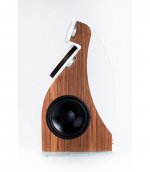I used John Kreskovsky's U-Frame worksheet to compare the polar response of a midrange in a sealed box versus a U-Frame. Details here:
DIYMA Car Audio Forum - View Single Post - Improve Your Soundstage for $2
Sorry about the link to another forum, but I'm working on a car install right now and I think I might try cardioids for it.
Some things I noticed:
1) I was shocked at how small the enclosures can be. Even a cardioid that's small enough to fit in your hand had six decibels of rejection at 800hz
2) There seems to be some good reasons to use small enclosures for midrange cardioids, because of the peak in response that occurs at one quarter wavelength. So basically you 'push' the peak higher in frequency, and get cardioid radiation in the lower midrange, which transitions to dipole as you go lower in frequency
DIYMA Car Audio Forum - View Single Post - Improve Your Soundstage for $2
Sorry about the link to another forum, but I'm working on a car install right now and I think I might try cardioids for it.
Some things I noticed:
1) I was shocked at how small the enclosures can be. Even a cardioid that's small enough to fit in your hand had six decibels of rejection at 800hz
2) There seems to be some good reasons to use small enclosures for midrange cardioids, because of the peak in response that occurs at one quarter wavelength. So basically you 'push' the peak higher in frequency, and get cardioid radiation in the lower midrange, which transitions to dipole as you go lower in frequency
Graaf, let's not be too fussy
who? me fussy???

it's just that ...when it walks like a duck, it quacks like a duck, it looks like a kind of a duck...
...then it must be a duck!
Patrick Baterman, I can't find anything about the Vanderstien speakers online. I also tried Vandersteen, but I couldn't find any dipoles. Do you have some more information?
With respect to the tilted cardioid enclosure, I think it might be a good idea. The floor reflection is generally the earliest and possibly also the most detrimental with respect to coloration. Decreasing its level relative to the direct sound will decrease its effect. The downside is that the ceiling reflection becomes stronger - but the advantage of a weaker floor reflection may well outweigh the disadvantage of a stronger ceiling reflection.
What I don't get about the Gradient is its side-firing woofer. Definitely makes for a more attractive (slim) looking speaker, but I think it is detrimental for the sound quality. Not a choice I would have made. If the small footprint is important (which I understand), I'd rather use a couple more smaller front-firing woofers, perhaps in a U-frame.
With respect to the tilted cardioid enclosure, I think it might be a good idea. The floor reflection is generally the earliest and possibly also the most detrimental with respect to coloration. Decreasing its level relative to the direct sound will decrease its effect. The downside is that the ceiling reflection becomes stronger - but the advantage of a weaker floor reflection may well outweigh the disadvantage of a stronger ceiling reflection.
What I don't get about the Gradient is its side-firing woofer. Definitely makes for a more attractive (slim) looking speaker, but I think it is detrimental for the sound quality. Not a choice I would have made. If the small footprint is important (which I understand), I'd rather use a couple more smaller front-firing woofers, perhaps in a U-frame.
What I don't get about the Gradient is its side-firing woofer.
I believe the rotated dipole design comes from the philosophy the speaker is allowed to be placed against the front wall. This is a major thing in small european apartments.
Edit: Also the midrange cardioid speaks for this philosophy (no sound is radiated to wall behind the speaker)
- Elias
Last edited:
There *is* one interesting effect of having the dipole driver rotated 90 degrees:
1) When you rotate the dipole, you're listening in the null between the front and the back
2) In theory, the null is infinitely deep. In reality, the null is something like 10-20dB. Let's call it 15dB for the sake of argument
3) This means that when the ON AXIS sound is flat, the off-axis sound is 'bassier'
You can see it in the polars; note the rise below 300hz:
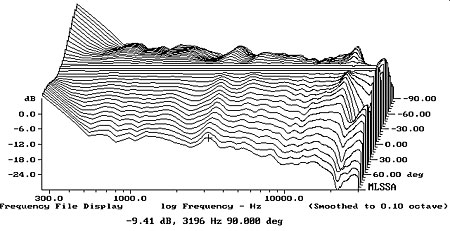
I wonder if this might allow the designer to deliver a sound that has some 'kick' without it sounding too bass heavy. IE, it might sound bass heavy if you're off axis, but on axis it sounds good.
1) When you rotate the dipole, you're listening in the null between the front and the back
2) In theory, the null is infinitely deep. In reality, the null is something like 10-20dB. Let's call it 15dB for the sake of argument
3) This means that when the ON AXIS sound is flat, the off-axis sound is 'bassier'
You can see it in the polars; note the rise below 300hz:

I wonder if this might allow the designer to deliver a sound that has some 'kick' without it sounding too bass heavy. IE, it might sound bass heavy if you're off axis, but on axis it sounds good.
Gradient helsinki is supposed to be placed near front wall and toed in liberately (45¤). Then bass is reflected from the front wall.
Here is original manual http://www.gradient.fi/Gradient/Downloads_Helsinki_FI_files/GRADIENT%20HELSINKI%20manual.pdf
Helsinki is a very exceptional speaker and it's bass is very sensitive to placement.
Gradient Revolution has dipole bass that can be rotated Revolution
Here is original manual http://www.gradient.fi/Gradient/Downloads_Helsinki_FI_files/GRADIENT%20HELSINKI%20manual.pdf
Helsinki is a very exceptional speaker and it's bass is very sensitive to placement.
Gradient Revolution has dipole bass that can be rotated Revolution
For the past few months I've been poring over way too many measurements, from Princeton and Audiosciencereview. Basically, I figured it would be wise to learn what commercial speakers deliver what I am looking for, instead of building and buying endless projects.
Something that surprised me, is that the Gradient speakers seem to measure really well, but nobody owns any of them. There are none for sale on eBay or Craigslist at the moment, the website of their U.S. distributor is down, and the founder of Gradient died two years ago.
Jorma Salmi, 1948-2018 | The Absolute Sound


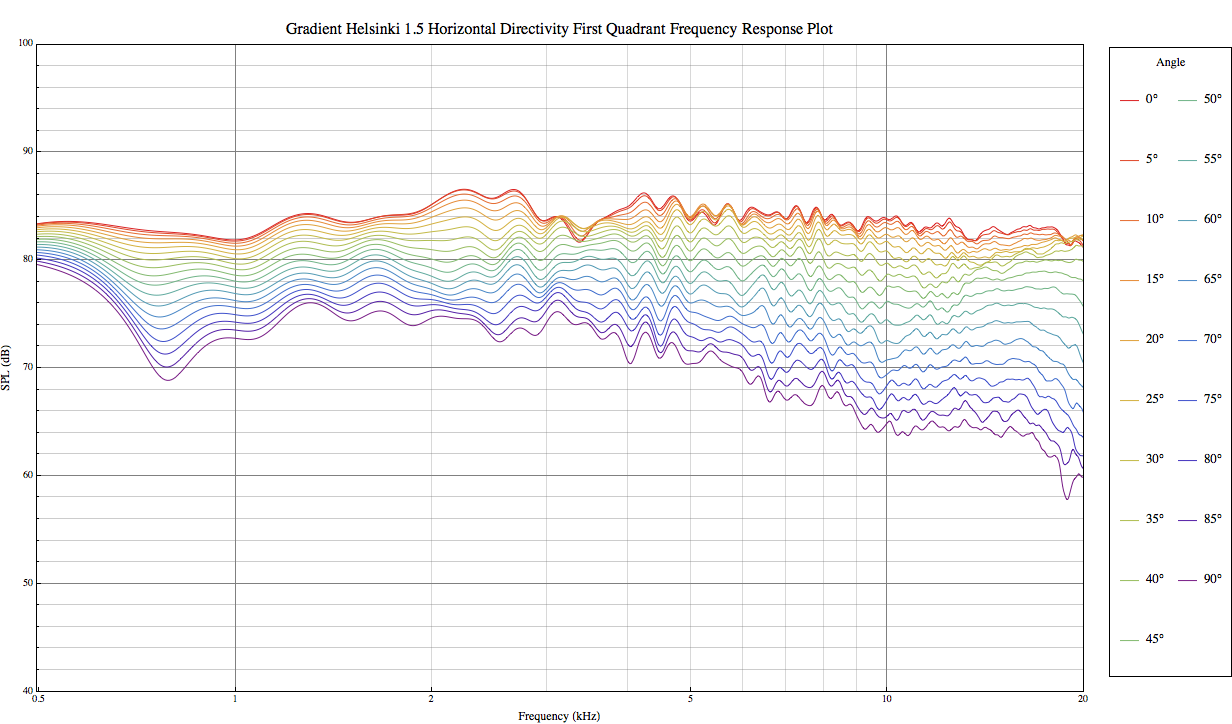
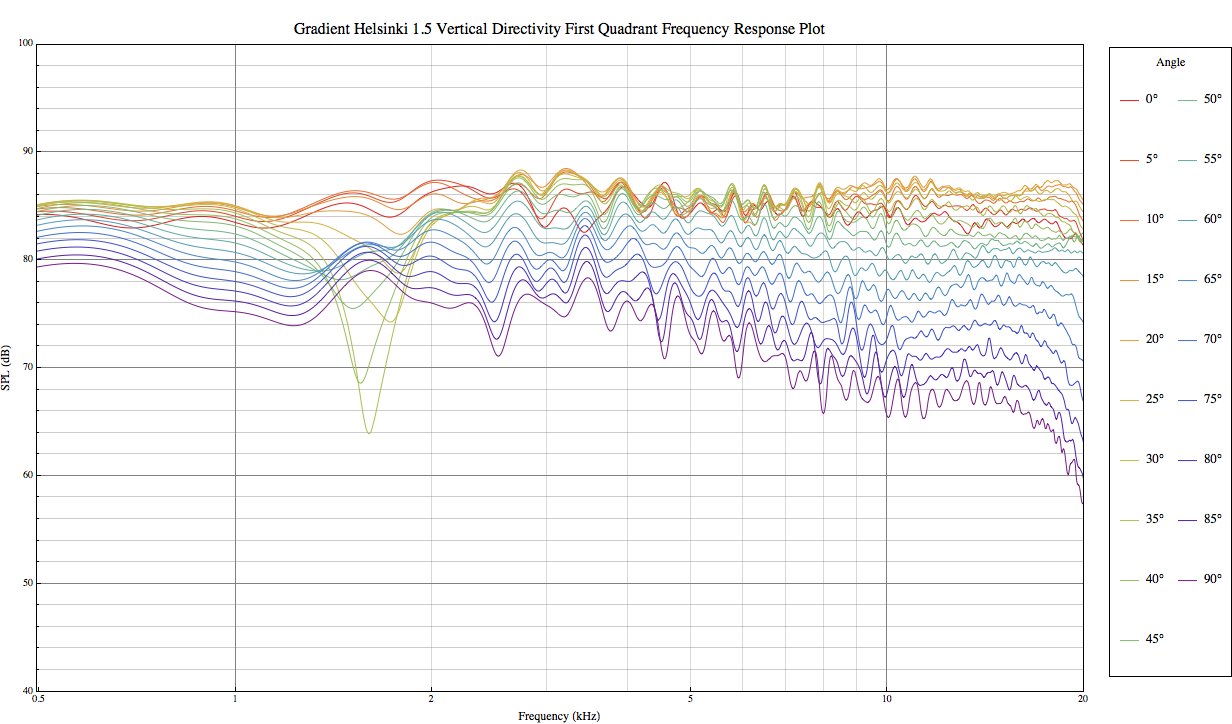
Here's the horizontal and vertical polar response of the Gradient Helsinki. Princeton measured something like 40 speakers, and the Gradient had the 2nd highest score on their horizontal directivity metric. That's a really good result, but what's even more interesting is that it had the 3rd highest result on the vertical metric. This is remarkable because a lot of speakers "rob Peter to pay Paul" - they have excellent horizontal directivity at the expense of vertical directivity. It's really hard to achieve both without using a coaxial.
The directivity of the Helsinki is so good, it even exceeds the Kef LS50 coaxial.
One thing that's a bit odd about the Helsinki polar response, is that the woofer is rotated ninety degrees! So you'll notice in Stereophile's polar measurement that the Helsinki is much bassier at 90 degrees off axis than on. (The woofer is a dipole.)
Theoretically, the Helsinki should offer controlled directivity to a much lower frequency than the Revel. Because the Revel is a conventional speaker, and it's basically a monopole below 500hz. On the downside, the Helsinki will likely be unable to match the output of the Revel. The Revel is more efficient and it has twice as many woofers AND they're in an efficient vented alignment, versus the Helsinki's inefficient dipole configuration.
Another interesting thing about the Helsinki is that it's directivity is nearly constant, at approximately 5.86. The Revel has a very good D.I. but it begins to beam at high frequency.
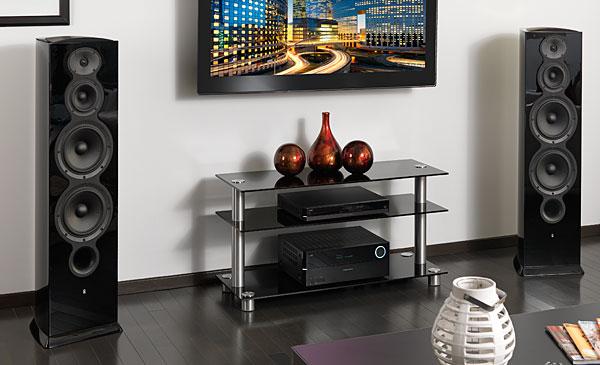
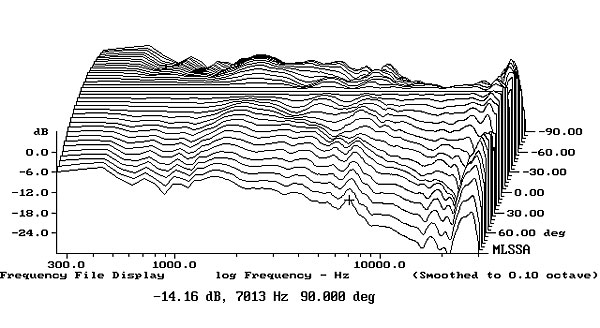
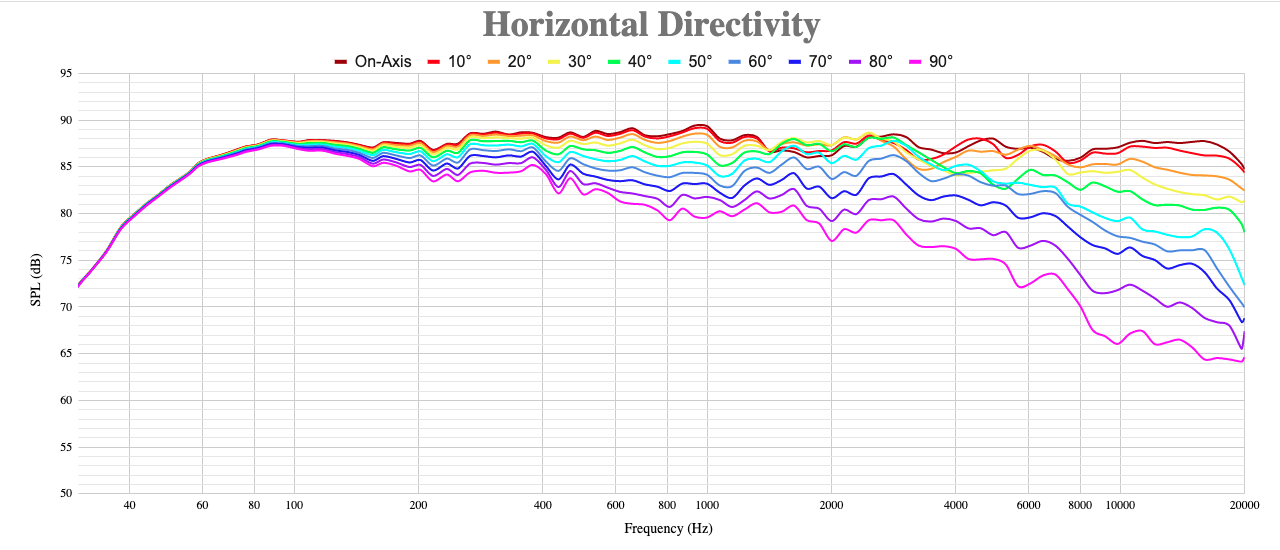
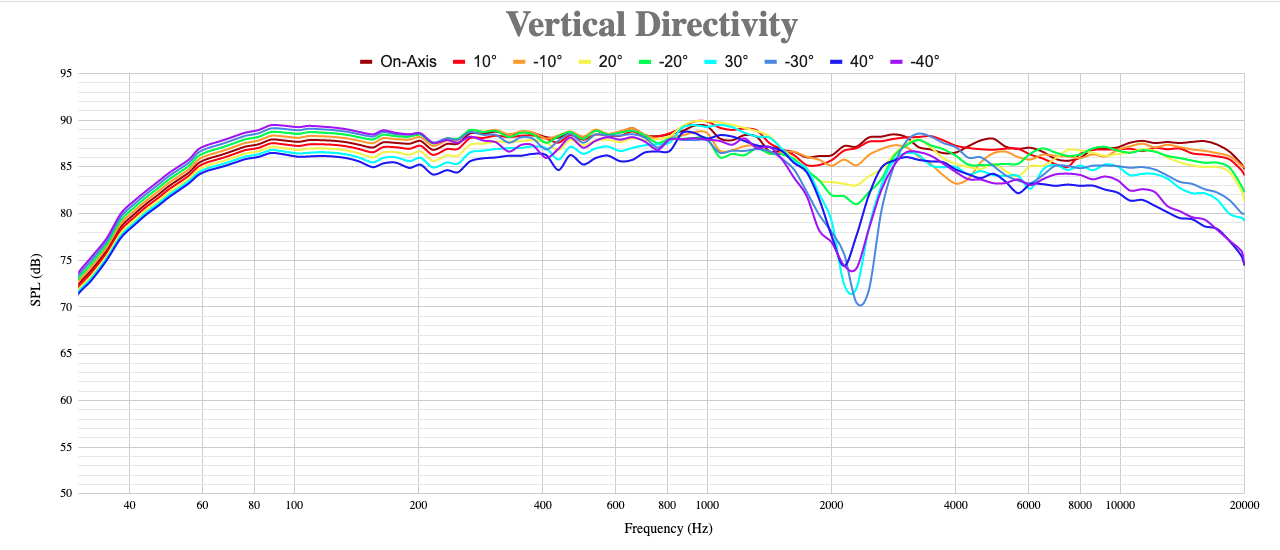
Here's the polar response of the Revel F208. The performance of the Revel is really good, and reflects a 'trickle down' effect from the $22,000 Revel Salon 2 from 2009.
The Gradient Helsinki, by comparison's sake, is a fairly modest speaker. I believe these are the drivers:
SEAS Prestige 22TAF/G (H1283) Alum/Magn. Alloy 22 mm Dome Tweeter ($43)
SEAS Prestige MCA15RCY (H1262) 5.5" Coated Paper Midrange ($55)
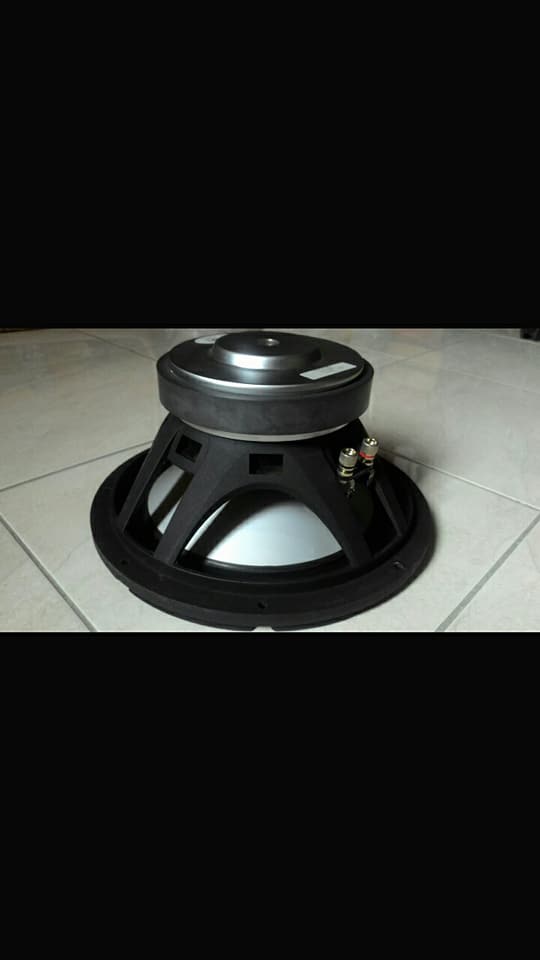
The woofer appears to be a SEAS Lotus car audio subwoofer, which is no longer for sale.
Something that surprised me, is that the Gradient speakers seem to measure really well, but nobody owns any of them. There are none for sale on eBay or Craigslist at the moment, the website of their U.S. distributor is down, and the founder of Gradient died two years ago.
Jorma Salmi, 1948-2018 | The Absolute Sound

Here's the horizontal and vertical polar response of the Gradient Helsinki. Princeton measured something like 40 speakers, and the Gradient had the 2nd highest score on their horizontal directivity metric. That's a really good result, but what's even more interesting is that it had the 3rd highest result on the vertical metric. This is remarkable because a lot of speakers "rob Peter to pay Paul" - they have excellent horizontal directivity at the expense of vertical directivity. It's really hard to achieve both without using a coaxial.
The directivity of the Helsinki is so good, it even exceeds the Kef LS50 coaxial.
One thing that's a bit odd about the Helsinki polar response, is that the woofer is rotated ninety degrees! So you'll notice in Stereophile's polar measurement that the Helsinki is much bassier at 90 degrees off axis than on. (The woofer is a dipole.)
Theoretically, the Helsinki should offer controlled directivity to a much lower frequency than the Revel. Because the Revel is a conventional speaker, and it's basically a monopole below 500hz. On the downside, the Helsinki will likely be unable to match the output of the Revel. The Revel is more efficient and it has twice as many woofers AND they're in an efficient vented alignment, versus the Helsinki's inefficient dipole configuration.
Another interesting thing about the Helsinki is that it's directivity is nearly constant, at approximately 5.86. The Revel has a very good D.I. but it begins to beam at high frequency.


Here's the polar response of the Revel F208. The performance of the Revel is really good, and reflects a 'trickle down' effect from the $22,000 Revel Salon 2 from 2009.
The Gradient Helsinki, by comparison's sake, is a fairly modest speaker. I believe these are the drivers:
SEAS Prestige 22TAF/G (H1283) Alum/Magn. Alloy 22 mm Dome Tweeter ($43)
SEAS Prestige MCA15RCY (H1262) 5.5" Coated Paper Midrange ($55)
The woofer appears to be a SEAS Lotus car audio subwoofer, which is no longer for sale.
Attachments
-
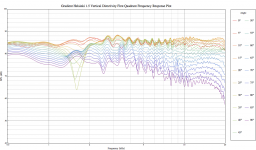 Gradient Helsinki 1.5 V Freq Resp Plot Q1.png232.6 KB · Views: 433
Gradient Helsinki 1.5 V Freq Resp Plot Q1.png232.6 KB · Views: 433 -
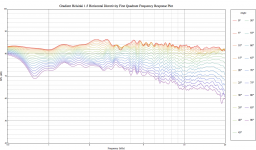 Gradient Helsinki 1.5 H Freq Resp Plot Q1.png214 KB · Views: 954
Gradient Helsinki 1.5 H Freq Resp Plot Q1.png214 KB · Views: 954 -
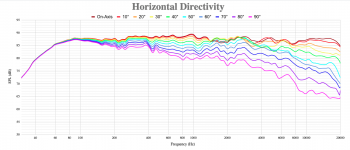 Screen Shot 2020-05-08 at 3.52.43 PM.png130.2 KB · Views: 417
Screen Shot 2020-05-08 at 3.52.43 PM.png130.2 KB · Views: 417 -
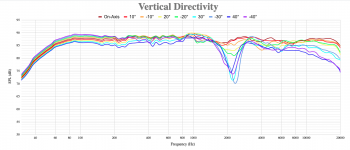 Screen Shot 2020-05-08 at 3.53.12 PM.png128 KB · Views: 424
Screen Shot 2020-05-08 at 3.53.12 PM.png128 KB · Views: 424 -
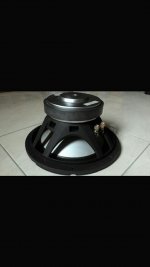 26908109_1594732793940442_6149363775204471923_n.jpg18.2 KB · Views: 469
26908109_1594732793940442_6149363775204471923_n.jpg18.2 KB · Views: 469
I measured the dimensions in irfanview, and it looks like the Helsinki uses one wavelength spacing on the midrange. It's approximately eight inches below the tweeter. The xover on the two is 1700hz, as can be seen in the dip on the vertical polars. The woofer is crossed over at approximately 225Hz.
Attachments
I thought the woofer was the Seas Lotus Car Sub...

Turns out it's probably the Peerless 830669
Peerless by Tymphany 830669 12" Paper Cone SLS Subwoofer
$77 at Parts Express
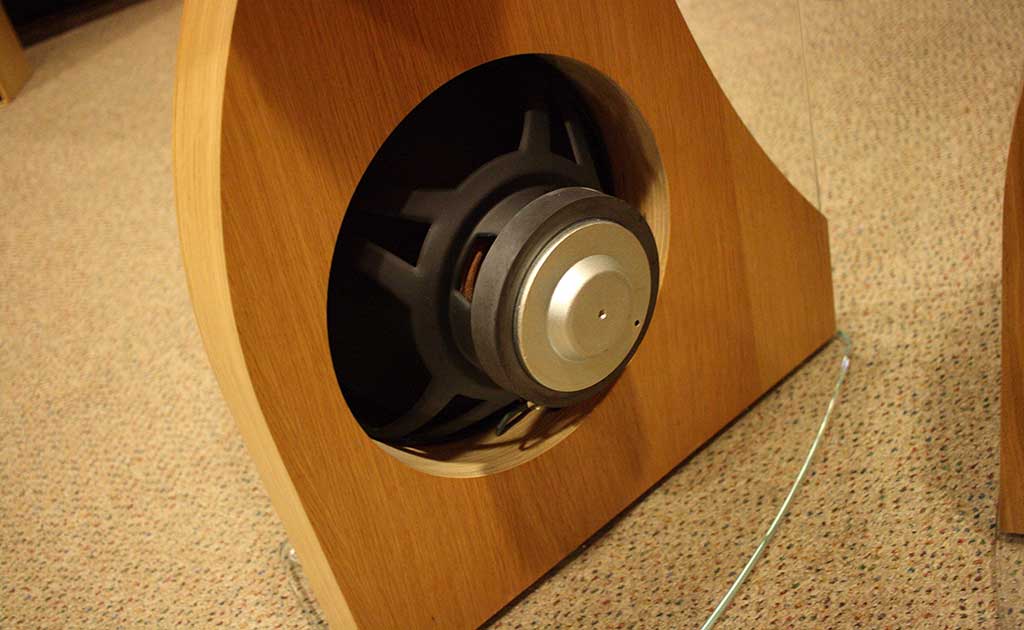
A 12" is a baby woofer as dipole. For diy clone, I would use 18"
The real challenge is to make the midrange to work right as cardiod "cookie"
Helsinki is passive, which is a miracle and also a limiting factor for the designer. Active dsp-controlled clone would be worth trying...
Helsinki is still in production, but it has never been a popular speaker, Revolution is in another league. Loudspeakers - Gradient Labs Oy
A brief history of Gradient Labs | Inner Magazines
The real challenge is to make the midrange to work right as cardiod "cookie"
Helsinki is passive, which is a miracle and also a limiting factor for the designer. Active dsp-controlled clone would be worth trying...
Helsinki is still in production, but it has never been a popular speaker, Revolution is in another league. Loudspeakers - Gradient Labs Oy
A brief history of Gradient Labs | Inner Magazines
- Status
- This old topic is closed. If you want to reopen this topic, contact a moderator using the "Report Post" button.
- Home
- Loudspeakers
- Multi-Way
- Who Likes Gradient?
